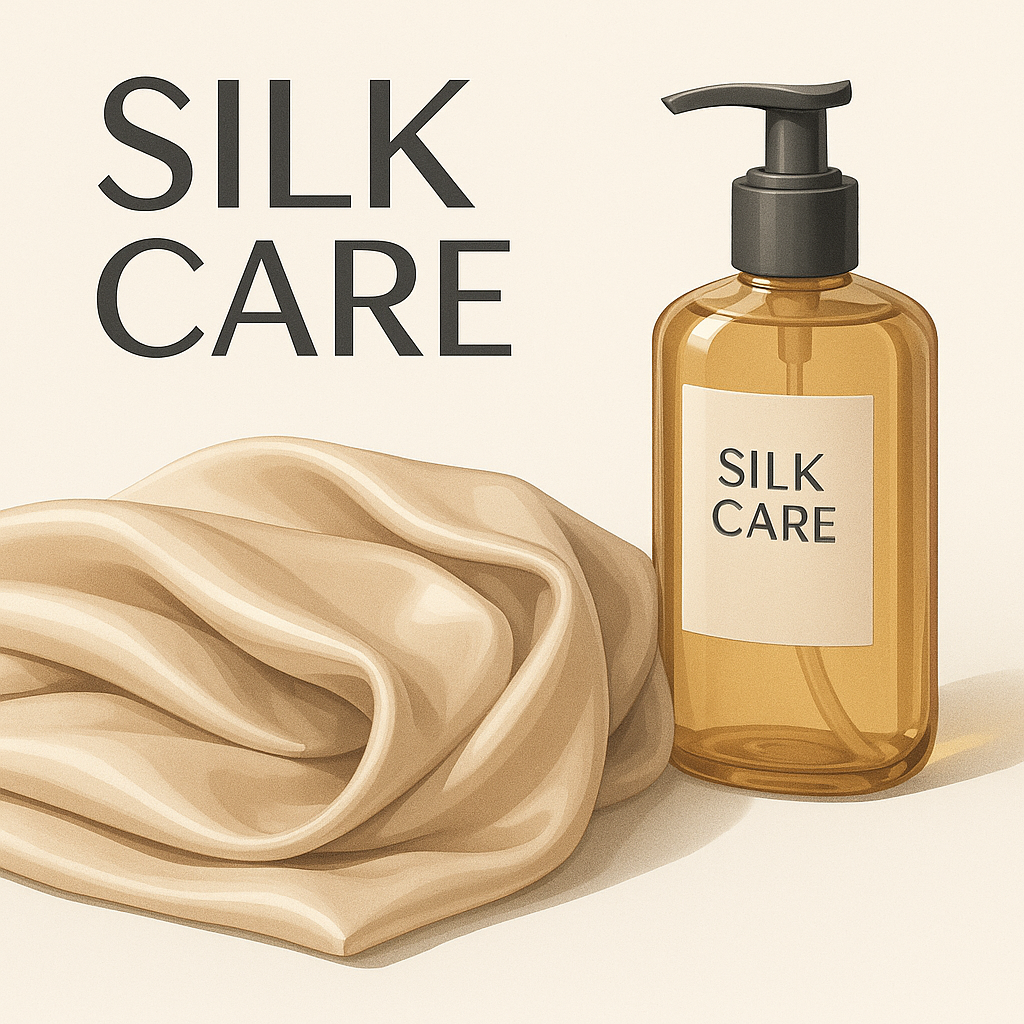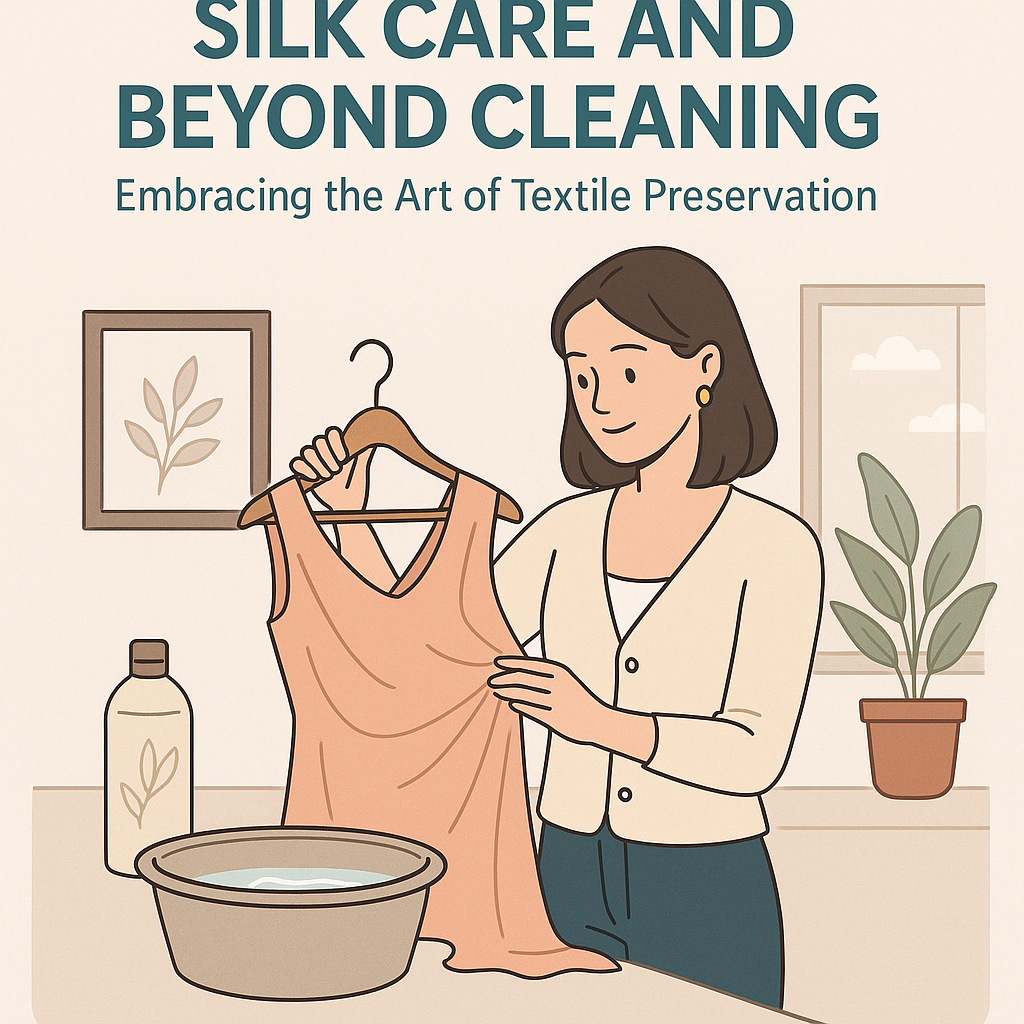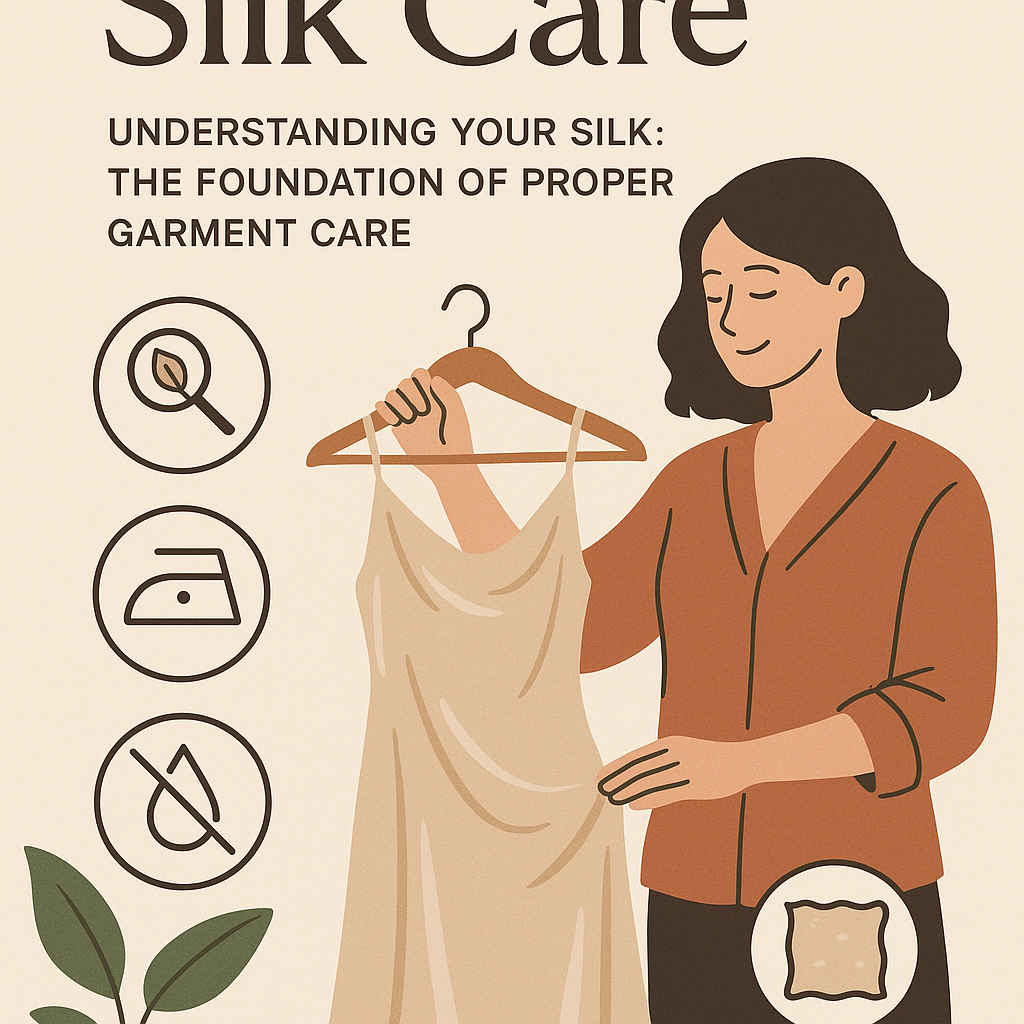
Table of Contents
- Beyond Cleaning: Embracing the Art of Textile Preservation
- Understanding Your Silk: The Foundation of Proper Garment Care
- The Sacred Ritual: A Step-by-Step Guide to Hand Washing Silk and Embroidery
- Targeted Stain Removal: A Museum-Grade Approach
- The Art of Proper Storage: Ensuring Garment Longevity for Decades
- Proactive Longevity: Daily Habits for Garment Wellness
- Conclusion: Your Role as a Garment Steward
- Summary of Key Silk Care Principles
- Frequently Asked Questions (FAQ) about Silk and Embroidery Care
Beyond Cleaning: Embracing the Art of Textile Preservation
This gown became a poignant case study in everything we will discuss. Its revival was not about aggressive cleaning; it was a slow, methodical process of understanding the fibers, respecting the craftsmanship, and gently coaxing it back to life. This is the core philosophy of garment preservation: it is a holistic approach that considers the very nature of the material to ensure its longevity. It is about becoming a partner with your garment, not just its owner.
Understanding Your Silk: The Foundation of Proper Garment Care
Before you can care for silk, you must understand it. Think of a silk fiber not as an inanimate thread, but as something much closer to your own hair. This simple shift in perspective is the foundation of all proper silk care.
Why Silk is a Living Fiber
At its core, silk is a protein fiber called fibroin. Its molecular structure makes it incredibly strong yet exquisitely delicate, sensitive to the same things that damage our hair: high heat, harsh chemicals (like chlorine bleach), and significant shifts in pH. This is why a standard laundry detergent, designed to attack grime on robust cotton or synthetics, can strip silk of its natural luster and cause irreparable harm. Different weaves also have different needs; a diaphanous organza requires an even lighter touch than a sturdy silk twill. For those interested in the specifics of various weaves, resources like the Tastemaker Fashion Silk Clothing Guide provide a helpful overview. Understanding this protein-based nature is the first step toward proactive longevity.
The Critical Role of Water in Silk Care
Water is not just water when it comes to delicate textiles. The mineral content in your tap water can be one of silk’s hidden enemies. Hard water, which is high in calcium and magnesium, can leave mineral deposits on the fibers. Over time, this buildup makes the silk feel stiff, dulls its color, and can even interfere with the effectiveness of your gentle detergent.
I often advise clients to perform a simple home test. It's a technique we use for preliminary assessments in the lab.
A Simple Home Test for Water Hardness:
-
Find a clean, clear glass bottle with a secure lid.
-
Fill it about one-third full with your tap water.
-
Add 5-10 drops of a pure liquid soap (like castile soap, not a detergent).
-
Shake vigorously for 15-20 seconds.
-
Observe the results. If you have a healthy layer of fluffy suds on top of clear water, you likely have soft water. If the water is cloudy and the suds are minimal, your water is hard.
If you discover you have hard water, do not despair. You can still safely wash your silks. The most effective solution is to perform the final rinse with distilled or filtered water. This small step will wash away any mineral deposits, leaving the silk fibers clean, soft, and lustrous. It's a small detail that makes a world of difference in garment longevity.
The Sacred Ritual: A Step-by-Step Guide to Hand Washing Silk and Embroidery
Hand washing a silk or embroidered garment should not be a frantic chore but a mindful, deliberate ritual. Set aside a quiet moment, prepare your space, and work with intention. This careful process is what protects the delicate fibers and intricate stitching from damage.
Preparation is Paramount: Gathering Your Tools
Before the garment even touches the water, having the right tools on hand is essential. This prevents scrambling and potential mistakes.
A common myth I must address is the use of baby shampoo or wool-specific washes. While seemingly gentle, many shampoos contain conditioners and oils that can leave a residue on silk, and wool washes often contain lanolin, which is unsuitable for silk’s smooth fibers. Stick to a product scientifically formulated for the job.
The Gentle Immersion: A Conservator's Hand Washing Technique
This is the method we use in the lab, scaled down for home use. It prioritizes minimal agitation to protect the fabric's structure and any delicate surface work.
-
Fill the Basin: Fill your clean basin with cool to lukewarm water.
-
Add Detergent: Add a very small amount of the pH-neutral detergent and swish it around to ensure it is fully dissolved before introducing the garment. Using too much detergent is a common mistake that requires excessive rinsing, stressing the fabric.
-
Submerge the Garment: Gently place the silk item into the water, pressing it down softly until it is fully submerged. For a piece with intricate needlework, such as this stunning Aurelle retro Chinese-style embroidery coat, it's always best practice to turn it inside out first to protect the delicate threads from any potential snagging.
-
Minimal Soaking: Let the garment soak for no more than 5-10 minutes. For heavily soiled items, you can extend this up to 30 minutes, but prolonged soaking can start to degrade the silk fibers.
-
Gentle Agitation: Gently swish the garment through the water with your hands. You can also softly press the water through the fabric. Never twist, scrub, or wring the item. Imagine you are bathing a delicate flower petal.

Rinsing and Drying: The Final, Crucial Steps
How you remove water from your garment is just as important as how you wash it. Wringing is the cardinal sin of silk care; the intense stress will snap the delicate protein fibers, leading to permanent wrinkles and a loss of shape.
-
Drain and Refill: Lift the garment from the soapy water, allowing the excess to drain. Do not squeeze it. Empty the basin, and refill it with cool, clean water (or distilled water for the final rinse).
-
Rinse Gently: Submerge the garment again and swish it gently to rinse out the soap. Repeat this process until no suds remain.
-
Remove Excess Water: Lay a large, clean white towel flat. Carefully lift your silk garment from the rinse water and place it flat on the towel. Place a second white towel on top. Gently roll the towels and the garment together, like a jelly roll. Press down softly along the roll to absorb the excess water. Do not twist.
-
Air Dry Correctly: Unroll the towels and immediately prepare the garment for drying. The best method is to lay it flat on a mesh drying rack, away from direct sunlight or heat, which can cause yellowing and fiber damage. If you must hang it, use a smooth, padded hanger that supports the garment's full weight without stressing the shoulder seams. Never use wooden hangers, as they can leach tannins and stain the fabric.
Targeted Stain Removal: A Museum-Grade Approach
When a stain happens, panic is the enemy. Hasty, incorrect actions can permanently set a stain that might otherwise have been removable. The principles of conservation demand a precise, targeted, and, above all, gentle approach.
The First 30 Minutes: Your Window of Opportunity
Immediate action is your greatest asset. As soon as a spill occurs, your goal is to remove as much of the substance as possible before it can bind with the silk fibers.
-
Blot, Never Rub: Use a clean, white cloth or paper towel to gently blot the stain from the outside in. This prevents the stain from spreading. Rubbing will only force the stain deeper into the fabric's weave and can fray the delicate fibers.
-
Address Solids: For thicker substances, like a drop of sauce, carefully lift away the excess with the edge of a dull knife or spoon before blotting.
Identifying the Enemy: A Stain Typology
In conservation, we classify stains to determine the correct solvent or treatment. For home use, a simplified version of this approach is highly effective. Always patch-test any treatment on a hidden seam or inseam first.
-
Tannin Stains (Wine, Tea, Coffee, Fruit Juice): These are plant-based stains. After blotting, you can gently dab the area with a 50/50 solution of cool water and white vinegar. The mild acidity can help break down the tannin. Rinse thoroughly afterward.
-
Protein Stains (Blood, Sweat, Egg): These stains are set by heat. Always use cool water. For a fresh stain, a gentle dab with a highly diluted solution of ammonia and water (a few drops per half cup of water) can be effective. This is what we used on a small, unidentified spot on the antique wedding gown, working under magnification.
-
Oil-Based Stains (Makeup, Salad Dressing, Grease): These require a different approach. First, try to absorb the oil by laying the garment flat and covering the stain with a layer of cornstarch or talcum powder. Leave it for several hours, then gently brush it off. This can often lift the oil right out of the fibers. For what remains, a spot treatment with your pH-neutral detergent before washing can work.
Damaging DIY Myths Debunked
The internet is filled with well-meaning but destructive advice. As a conservator, I have seen the heartbreaking results of these DIY "hacks."
-
The Lemon Juice Myth: While a mild acid, the citric acid in lemon juice can act as a bleach, especially when exposed to sunlight, leaving a permanent yellow or lightened spot. Furthermore, the sugars in the juice can caramelize and create a new, worse stain.
-
The Salt Myth: Applying salt to a wine stain is common advice, but salt is an abrasive crystal. Rubbing it into delicate silk is like using sandpaper, causing irreversible damage to the fibers.
-
The Club Soda Myth: While mostly harmless, club soda is simply carbonated water. It has no special cleaning properties beyond plain water and offers no advantage in stain removal.
The yellowed wedding gown had a faint ring on the skirt where, the family historian told me, a great-aunt had once tried to remove a champagne spill with lemon juice at the reception. That area of the fabric was noticeably weaker than the rest, a permanent scar from a well-intentioned but flawed remedy.
The Art of Proper Storage: Ensuring Garment Longevity for Decades
Your beautiful silk garment spends more of its life in your closet than on your body. Proper storage is not a passive act; it is the most crucial component of proactive garment longevity. The restoration of the wedding gown would have been meaningless if it were returned to the same damaging environment.
The Three Enemies of Silk: Light, Humidity, and Pests
These three factors are responsible for the vast majority of textile degradation in storage.
-
Light: Both sunlight and harsh artificial light are catastrophic for silk. The UV radiation breaks down the protein fibers, causing them to become brittle, and fades dyes with alarming speed.
-
Humidity: An environment that is too damp encourages mildew growth, which can permanently stain and weaken fabric. An environment that is too dry can make fibers brittle. A stable humidity of around 50% is ideal.
-
Pests: Moths and carpet beetles are attracted to protein fibers, especially those with lingering food or perspiration stains.
Creating a Sanctuary: The Ideal Storage Environment
Your closet should be a haven for your delicate garments.
Long-Term Storage for Heirloom Garments
For pieces you won't be wearing for a season or longer, archival storage is the gold standard. This involves placing the clean garment in an acid-free archival box, carefully interleaved with layers of acid-free tissue paper. This protects it from light, dust, and environmental fluctuations.
After months of painstaking, gentle cleaning, stain reduction, and minor stabilization of the embroidery, the 1920s wedding gown was reborn. The yellowing had lifted to a soft, antique ivory, the stain was a barely-there shadow, and the silk had regained a measure of its suppleness. We packed it in a custom archival box, nestled in acid-free tissue, ready for the fourth generation. Seeing the bride-to-be's joyful tears was a profound reminder of why this work matters. We weren't just saving a dress; we were preserving a legacy.

Proactive Longevity: Daily Habits for Garment Wellness
Extending the life of your garments is also about the small habits you cultivate between wearings.
-
Let Garments Breathe: After wearing a silk garment, hang it in a well-ventilated area for a few hours before returning it to the closet. This allows any absorbed moisture to evaporate.
-
Protect from Chemicals: Apply perfumes, hairsprays, and deodorants before you get dressed. The alcohol and chemicals in these products can stain and weaken silk fibers.
-
Steam, Don't Iron: If you must remove wrinkles, a gentle steaming is far safer than direct ironing. If you must use an iron, turn the garment inside out, use the lowest possible heat setting (the "silk" setting), and always use a press cloth between the iron and the fabric. Never use steam from the iron itself, as it can leave water spots.
Conclusion: Your Role as a Garment Steward
Caring for your fine silk and embroidered clothing is an act of defiance in a world of fast fashion. It is an investment of time and attention that pays dividends in beauty, quality, and sustainability. By embracing these principles—understanding the fiber, washing with intention, treating stains with precision, and storing with foresight—you transition from a mere owner to a true steward. You become a conservator in your own home, preserving not just the fabric, but the artistry and the memories woven into it. The power to ensure these beautiful pieces last a lifetime, and perhaps beyond, is now in your hands.
Summary of Key Silk Care Principles
-
Understand the Fiber: Treat silk as a protein fiber, similar to hair, that is sensitive to heat, chemicals, and pH.
-
Use the Right Tools: Always use a pH-neutral detergent specifically for delicates and cool to lukewarm water.
-
Wash Gently: Hand wash with minimal agitation and never wring or twist the fabric.
-
Dry with Care: Roll the garment in a towel to remove excess water and air dry it flat or on a padded hanger, away from direct heat or sun.
-
Act Fast on Stains: Blot immediately, never rub. Use targeted, gentle treatments based on the type of stain and always patch-test first.
-
Store Properly: Use breathable garment bags and padded hangers in a cool, dark, and dry place. For long-term storage, use acid-free archival materials.
Frequently Asked Questions (FAQ) about Silk and Embroidery Care
Q1: Can I ever use an iron on my silk garments?
Yes, but with extreme caution. Always use the lowest heat setting, turn the garment inside out, and place a clean cotton cloth (a "press cloth") between the iron and the silk. Iron while the silk is still slightly damp. Never use the iron's steam function directly on the fabric, as it can cause water spots. A handheld steamer is a much safer alternative for removing wrinkles.
Q2: What is the single biggest mistake people make when caring for silk?
The most common and damaging mistake is using the wrong detergent. Standard laundry detergents contain harsh enzymes and alkaline agents designed to break down proteins and fats in stains, but since silk itself is a protein, these detergents literally digest and destroy the fabric over time, leading to a loss of sheen and strength.
Q3: How often should I wash my silk clothing?
Wash silk only when necessary. Unlike cotton, silk is naturally resistant to dust and mildew and does not need to be washed after every single wear. If the garment is not visibly soiled, you can often refresh it by airing it out or giving it a light steam. Over-washing is a common cause of premature wear.
Q4: Are there any "safe" commercial stain removers for silk?
It is best to be extremely wary of commercial, all-purpose stain removers, as most are far too harsh for silk. If you must use one, look for a product specifically labeled as safe for silk and delicates, and without exception, test it on an invisible area like an inside seam allowance before applying it to the stain.
Q5: My white silk has yellowed. Can it be reversed?
Yellowing can be caused by several factors, including age, improper storage, or exposure to chemicals. If the yellowing is from residue (like from the wrong detergent), a gentle hand wash may improve it. For more persistent yellowing caused by oxidation, the process is much more complex. A potential home remedy is a soak in a highly diluted solution of water and a sodium perborate-based oxygen bleach (not chlorine bleach), but this carries risks and is best attempted only on durable silk items as a last resort. For a precious heirloom, this is a procedure that should be entrusted to a professional conservator.


0 comments